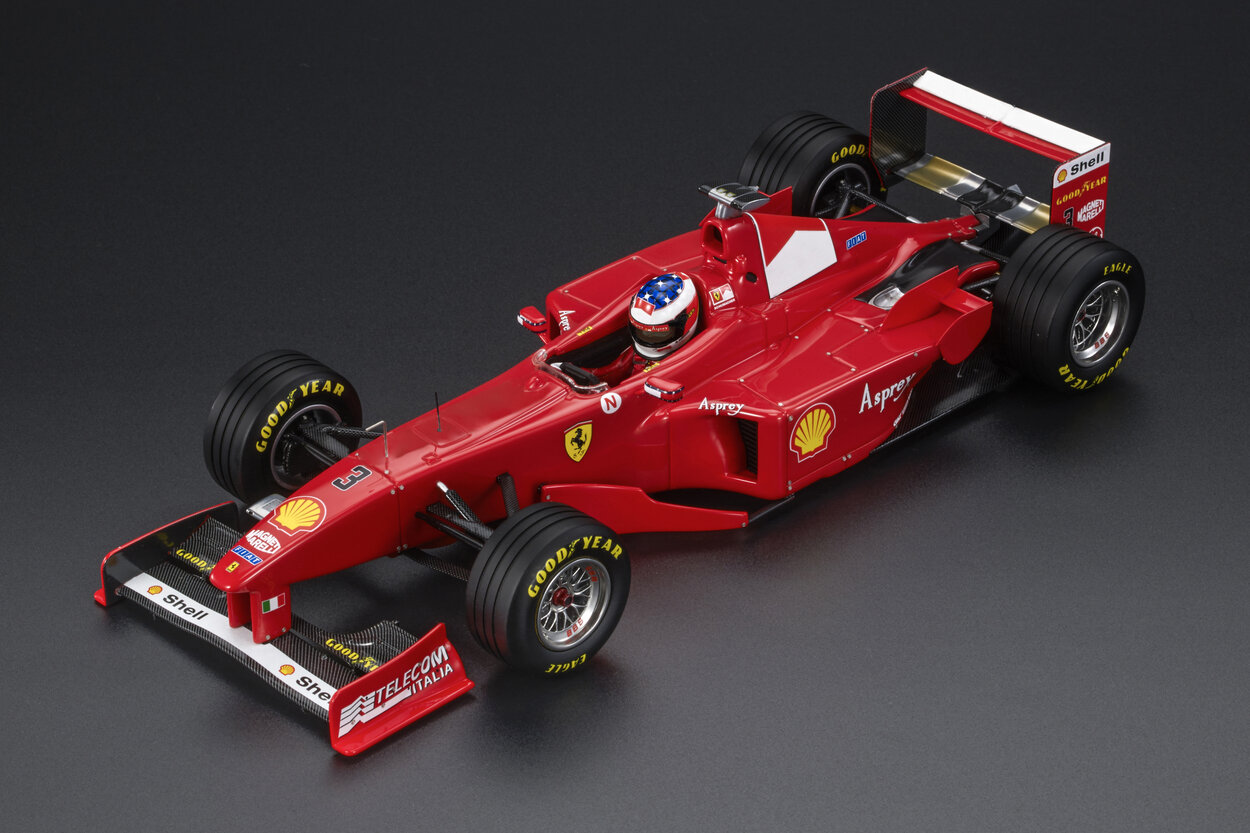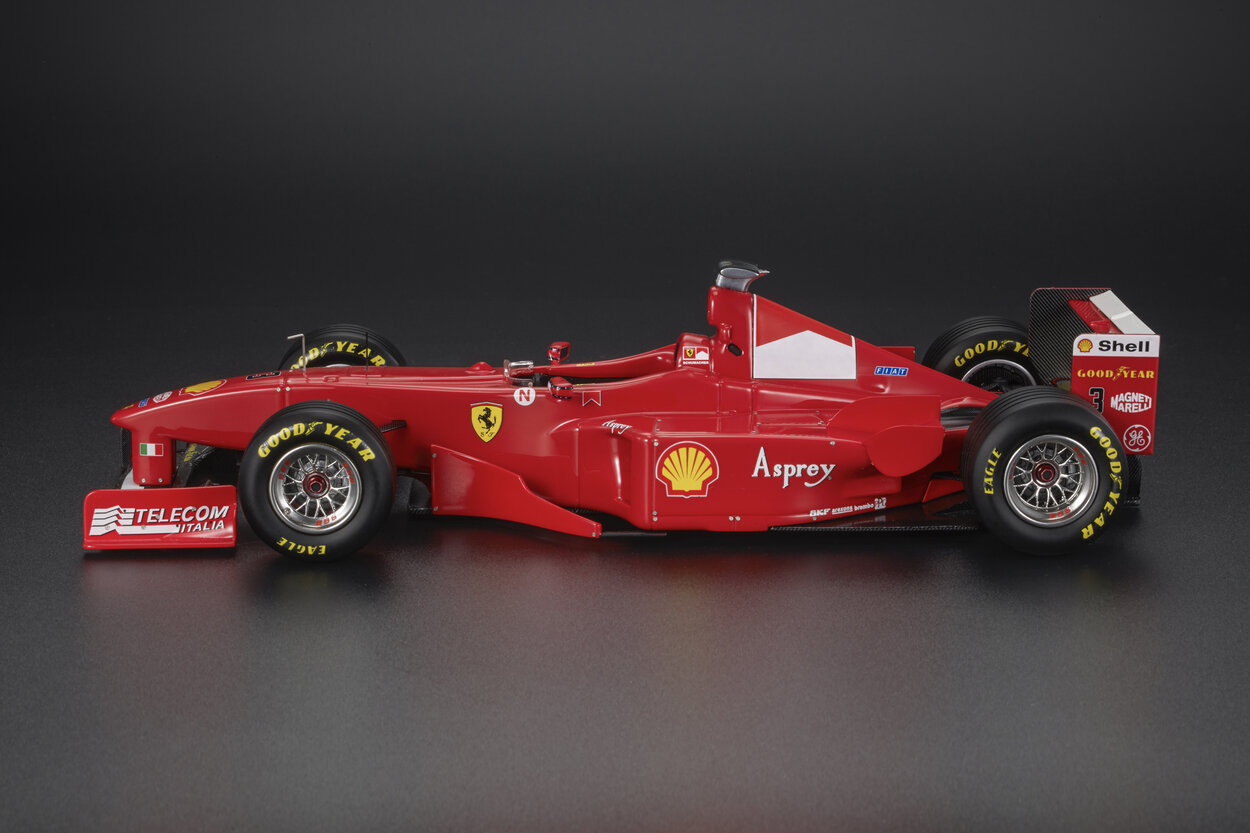Ferrari F300
It is the first Prancing Horse single-seater entirely designed by Rory Byrne after the exit of John Barnard. A natural evolution of its predecessor, it serves as the starting point for the cars that will follow and, from 1999 to 2004, clinch 11 world titles in six seasons.
Compared to the previous year’s car, the F300 is narrower and features further improved aerodynamics. In addition to Byrne, the team of technicians under Brawn includes Italians Giorgio Ascanelli and Aldo Costa, Greek Nikolas Tombazis, and the Englishman of Dutch descent, Willem Toet. The 80° V10 engine with a displacement of three liters has been completely redesigned by Paolo Martinelli from Modena and bears the designation 047.

Drivers:
Michael Schumacher: Second in the world championship. This is the outcome of a season in which the German driver wins six races and fights for the title until the last Grand Prix. At Suzuka, Michael starts from his third pole position of the season. However, a stalled engine at the second start forces him to climb back from the last row. The explosion of a tire while he’s in third position with twenty laps to go shatters his remaining hopes for the world championship. He secures first place in Buenos Aires, Montreal, Magny-Cours, Silverstone, Budapest, and Monza. He takes pole position at Monza, the Nürburgring (Luxembourg Grand Prix), and Suzuka. He sets the fastest lap at Imola, Montreal, Silverstone, Budapest, Spa, and Suzuka.
Eddie Irvine: The Irish driver secures eight podium finishes during the season. Irvine finishes second in Magny-Cours, Monza, and Suzuka, and third in Buenos Aires, Imola, Monaco, Montreal, and Silverstone. It’s clear that his teammate is in another league, but Irvine proves to be a worthy teammate for the situation.
Our model cars:

At Imola, the F300 showcases aerodynamic appendages on the sidepods that will be banned by the Federation starting from the next race. In Canada, a new nose, new sidepods, and new exhausts are introduced. Meanwhile, the car maintains its overall competitiveness, allowing Schumacher to fight almost on equal terms with Mika Hakkinen, whose McLaren has the advantage of even better aerodynamics.
The F300 secures six victories during the season, along with three pole positions. These results are complemented by a total of 19 podiums between the two drivers and six fastest laps in the race. Vice World Champion in the Drivers’ and Constructors’ standings. Waiting for even better times, which are just around the corner, the Ferrari of Montezemolo, Todt, Brawn, Byrne, Martinelli, and Schumacher has returned steadily to compete for the top positions.



